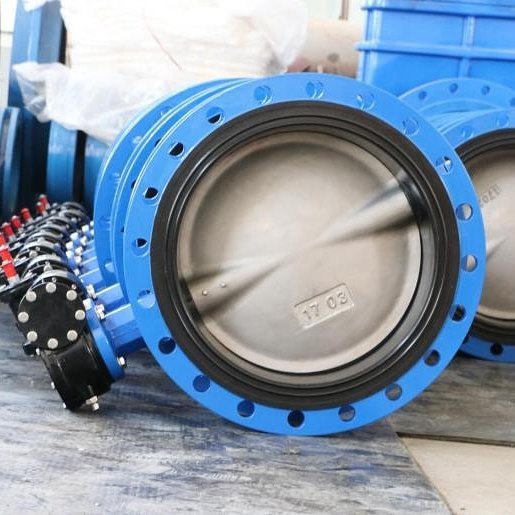UAE Valves is leading provider of high-quality industrial valve, ensuring efficient fluid control in industry such as oil & gas, water treatment, power generation and chemical processing. Among various type of valve used in these industry, gate valve and butterfly valve are two most employed. While both serve same purpose of controlling fluid flow, they differ significantly in terms of design, operation and application.
Difference Between Gate & Butterfly Valve
It is linear motion valve that use flat or wedge shaped gate to control flow of fluid. It is primarily used for on or off control rather than throttling application. When fully open, it provide minimal flow resistance, making it suitable for application requiring free flow of fluid.
Design & Structure of Gate Valve
Gate valve have bulky and robust structure, consisting of solid gate that move perpendicular to flow path. These valve require ample space for operation and are often used in large scale industrial setting.
Material Used for Gate Valve
- Cast Iron – Common in water and wastewater system.
- Stainless Steel – Used in high temperature and corrosive environment.
- Brass – Suitable for low pressure application.
- Bronze – Resistant to corrosion in marine and chemical application.
Key Part of Gate Valve
- Body: The outer casing that houses internal component.
- Gate: The flat or wedge shaped disc that move up and down to control flow.
- Stem: Connect actuator or handwheel to gate.
- Seats: Provide sealing surface to prevent leak.
- Handwheel/Actuator: Used to move gate up and down.
Working Mechanism
It operate by raising or lowering gate inside valve body. When handwheel or actuator is turned, stem move the gate upward, allowing fluid to pass through. When gate is fully lowered, it block flow completely. This mechanism ensure tight shut off but does not allow for precise flow control.
Advantage of Gate Valve
- Provide full unobstructed flow path.
- Minimal pressure drop when fully open.
- Excellent shut off capability.
- Suitable for high pressure and high temperature application.
Common Application of Gate Valve
- Oil and gas industry
- Water distribution system
- Power plant
- Steam and high temperature application
It is quarter turn rotational valve that use disc mounted on a rotating shaft to regulate flow. The disc rotate 90 degree to either allow or restrict fluid flow. These valve are widely used due to their compact design, quick operation and suitability for throttling application.
Design & Structure of Butterfly Valve
Butterfly valve have compact and lightweight design, making them ideal for application where space is limited. The disc remain in flow path, even when fully open, which may cause slight pressure drop.
Material Used for Butterfly Valve
- Ductile Iron – Strong and durable for industrial application.
- Stainless Steel – Corrosion resistant and used in chemical and other industry.
- PVC (Polyvinyl Chloride) – Lightweight and cost effective for water system.
- Aluminum Bronze – Ideal for marine application due to saltwater resistance
Key Part of Butterfly Valve
- Body: The outer casing that hold internal component.
- Disc: The rotating element that control fluid flow.
- Stem: Connects the actuator or handle to disc.
- Seat: Provide sealing surface to prevent leak.
- Handle/Gear/Actuator: Control rotation of the disc.
Working Mechanism
It operate by rotating disc inside valve body. When handle or actuator is turned, the disc rotate 90 degree to either allow fluid to pass or restrict flow. This quick quarter turn operation make it highly efficient for applications requiring rapid shut off or flow control.
Advantage of Butterfly Valve
- Compact and lightweight design.
- Quick quarter turn operation for fast response.
- Suitable for throttling and regulating flow.
- Requires less space and maintenance compared to gate valve.
Common Application of Butterfly Valve
- Water treatment and distribution system
- HVAC and cooling system
- Chemical industry
Key Differences Between Gate Valve and Butterfly Valve
| Feature | Gate Valve | Butterfly Valve |
| Operation Type | Linear motion (raises/lowers gate) | Quarter-turn rotation of disc |
| Flow Control | Best for on/off applications, not throttling | Ideal for throttling and flow regulation |
| Design | Bulky and requires more space | Compact and lightweight |
| Pressure Drop | Minimal when fully open | Slight pressure drop due to the disc in the flow path |
| Shut-off Performance | Provides tight shut-off | Can achieve good sealing but may require seat replacements |
| Maintenance Requirement | Requires periodic maintenance | Low maintenance due to fewer moving parts |
| Installation Space | Requires more space for operation | Space-efficient and easy to install |
| Application Suitability | Best for high-pressure applications | Suitable for moderate pressure applications |
Which Valve Should You Choose?
Selecting between a gate valve and a butterfly valve depends on your operational requirements. Here are some key factors to consider:
- For full, unobstructed flow and minimal pressure drop: Choose a Gate Valve.
- For quick operation and compact installation: Choose a Butterfly Valve.
- For high-pressure and high-temperature applications: Gate valves are better suited.
- For throttling and flow regulation: Butterfly valves provide better performance.
- For cost-effective and lightweight solutions: Butterfly valves are ideal.
Conclusion
Both gate valve & butterfly valve play an essential role in fluid control system, each offering unique advantage depending on application. Gate valve are best suited for application requiring tight shut off and minimal pressure drop, while butterfly valve excel in throttling application and space constrained environment.
At UAE Valves – we specialize in providing top quality gate and butterfly valve for various industry. Contact us today to find the best valve solution for your need!



